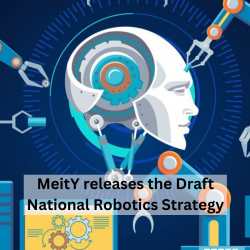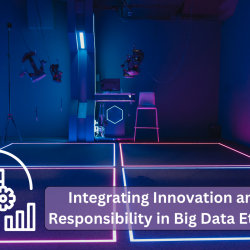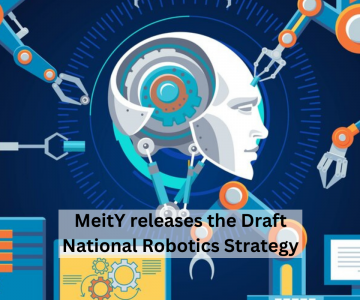Microsoft is setting up a team to work on Robotics and Automation in Data Centers

Introduction to Microsoft’s robotics and automation in data centers
Microsoft has established a new team focused on robotics and automation in data centers. This team’s main goal is to implement the latest technologies and techniques to boost productivity and reduce human error in data centers. Data centers, the backbone of the digital world, play a crucial role in storing, managing, and processing tremendous amounts of data. With the demand for data center services only increasing, it is vital to enhance their efficiency to keep up with this growing demand.
By utilizing robotics and automation, Microsoft aims to revolutionize the way data centers operate. These technologies can automate repetitive tasks that were previously performed by humans, such as server maintenance and updates. With robotic arms and automated systems taking care of these routine tasks, employees can focus on more critical aspects of data center management.
Furthermore, these advancements can significantly reduce the chances of human error. As much as we strive for perfection, mistakes are bound to happen when working on repetitive tasks for extended periods.
But how exactly will these technologies be implemented? The team plans to use artificial intelligence (AI) algorithms coupled with machine learning (ML) models to monitor data center operations continuously. This approach will allow for real time adjustments based on performance metrics, resulting in improved efficiency and optimal resource utilization.
What is Microsoft’s plan?
Let’s understand what led Microsoft to make this decision. It all ties back to their overall strategy of investing in emerging technologies. With the rise of artificial intelligence and machine learning, there is a growing need for efficient and automated processes in data centers. By incorporating robotics and automation, Microsoft hopes to streamline operations and reduce human error.
The team responsible for this initiative will be tasked with developing and implementing robotic systems within Microsoft’s data centers. This includes creating robots that can perform routine maintenance tasks, handling inventory management, as well as automating server deployment and maintenance processes.
So why is this move by Microsoft significant? For starters, it shows their commitment towards staying at the forefront of technology. By embracing automation, they are not only improving the efficiency of their data centers but also setting an example for other companies in the industry.
Additionally, this decision aligns with Microsoft’s goal of becoming carbon negative by 2030. Automation will reduce energy consumption and waste in data centers, leading to a more sustainable approach towards managing these facilities.
From a business perspective, automation is expected to have a positive impact on Microsoft’s bottom line. By streamlining processes and increasing productivity, they can save time and resources which can then be allocated towards other areas of growth.
Why is robotics and automation important in data centers?
Data centers are the backbone of our digital world, housing large amounts of information and providing essential services to businesses and individuals. With the ever increasing demand for data storage and processing, it is crucial to have efficient and reliable systems in place to manage these vast centers.
Microsoft, one of the leading technology companies, has recently announced its plans to set up a team specifically focused on incorporating robotics and automation in data centers. This move highlights the importance of this emerging technology in the world of data management.
Increase Efficiency and Reduce Costs
The main goal of any business is to increase efficiency while reducing costs. In data centers, this can be achieved through automating routine tasks such as system checks, software updates, and data backups. By removing the need for human intervention in these repetitive tasks, errors can be minimized, leading to smoother operations. Additionally, automation allows for faster execution of these tasks, ultimately increasing overall efficiency in data center operations.
Improving Safety for Workers
Data centers often house highly sophisticated equipment with high levels of heat generation. This makes it a hazardous environment for workers. By implementing robotics, we can reduce the need for human operators to be exposed to potential dangers. Robots can take over dangerous or physically taxing tasks, reducing the risk of accidents or injury in the workplace.
Faster Response Time to Issues
In a data center setting, even minor issues can have major consequences if not addressed promptly. With automated monitoring systems in place, any issues or anomalies can be detected immediately without relying on human observation. This allows for a faster response time and 24/7 monitoring capabilities.
Benefits of implementing robotics and automation in data centers.
Are you fascinated by the advancements in technology and the increasing use of it in various industries? Well, the data center industry is no exception. In fact, Microsoft has recently announced its plans to set up a team dedicated to working on robotics and automation in data centers. This move signifies the growing importance and benefits of implementing such technologies in data centers.
Increased Efficiency and Cost Effectiveness
One of the major advantages of implementing robotics and automation in data centers is increased efficiency and cost effectiveness. With the use of robots, tasks that were previously done manually can now be completed at a much faster pace, thus reducing the need for human labor. This not only saves time but also reduces operational costs for companies. As robots can work 24/7 without breaks or fatigue, they can handle tasks in an efficient manner, leading to improved productivity and cost savings for businesses.
Improved Accuracy and Precision
Another key benefit of robotics and automation in data centers is improved accuracy and precision. With the use of robots, tasks such as server deployment can be completed with utmost precision and exactness. This eliminates human errors that may occur during manual operations, thus ensuring high quality results every time. Moreover, robots can also perform repetitive tasks with consistent accuracy, reducing the risk of mistakes or malfunctions.
Reduced Downtime
Downtime is a major concern for data centers as it can cause significant financial losses for businesses. However, with robotics and automation, this risk can be significantly reduced. By automating routine maintenance tasks through smart sensors and algorithms, potential issues can be identified before they escalate into major problems. This helps to prevent unexpected equipment failures or downtime due to maintenance issues, ensuring smooth operations
Key roles and responsibilities of the team members.
One of the first things that should be established within a team is a clear division of roles and responsibilities. This ensures that everyone knows what their specific role is and what they are accountable for. It also helps avoid confusion and duplication of efforts. In the case of Microsoft’s robotics and automation team, each member may have different areas of expertise such as programming, engineering, or project management.
Along with clear roles, it is essential to define specific tasks and deliverables for each team member. This not only helps in achieving project goals but also holds individuals accountable for their contribution towards the team’s success. For instance, one team member might be responsible for designing the robot’s hardware while another might focus on developing software components.
In addition to task allocation, establishing effective communication protocols is crucial for efficient collaboration within a team. This includes setting up regular team meetings, using technology tools like email or messaging platforms for quick updates, and defining escalation procedures for any issues or roadblocks along the way.
A culture of accountability and ownership should also be encouraged within the team. Each member should take responsibility for their assigned tasks and ensure timely completion. This not only creates a sense of ownership but also fosters trust among team members.
Future prospects and possibilities for Microsoft’s team on robotics and automation.
One of the main driving forces behind Microsoft’s decision to invest in this field is the advancements in technology that have enabled more efficient and streamlined processes for data center operations. With the growing demand for cloud services, data centers are becoming increasingly crucial for businesses. And as these centers handle massive amounts of data, it becomes essential to ensure their reliability and reduce human error.
By incorporating robots into data center operations, Microsoft can improve reliability through consistent performance and eliminate the risk of human error. These machines can also work around the clock without rest, leading to increased efficiency in managing tasks such as server maintenance, equipment monitoring, and inventory management.
But it’s not just about improving reliability; robotics and automation bring along significant cost savings as well. By increasing efficiency in data center operations, Microsoft can save time and resources previously spent on manual labor. This can lead to cost savings for the company and potentially translate into lower prices or better services for customers.
Moreover, with such advancements in technology, there is a possibility that Microsoft could expand its use of robotics and automation beyond just data centers. As the technology evolves, there are various industries where these systems could be beneficial – from healthcare to manufacturing to transportation. With its expertise in cloud computing and AI capabilities through Azure Cognitive Services,
Check Out:
Best Data Science Courses In India






Ingen kommentarer endnu